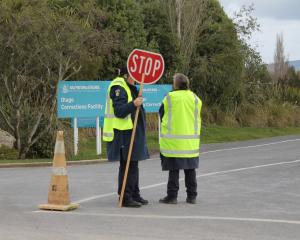Council resource consent manager Alan Worthington yesterday confirmed the application by Betterways Advisory Ltd had been suspended pending further information from those behind the hotel development.
Council planner Lianne Darby has written to the development's representatives seeking further information on the visual, shading and wind effects "resulting from the significant scale of the proposed building".
The letter was sent to Dunedin resource consent consultant Don Anderson, of Anderson & Co, acting for Betterways.
Mr Anderson told the Otago Daily Times the extra information was being compiled, and nothing had emerged that represented a stumbling block for the project.
"It all just takes time."
Plans for the five-star hotel and apartment complex were first announced by Dunedin lawyer Steve Rodgers, of Rodgers Law, in May.
The building at 41 Wharf St would tower over its surroundings, its 28 storeys containing 215 hotel bedrooms, restaurants and bars, 164 self-contained apartments, and parking for buses and cars.
Mr Rodgers, the director of Betterways, has so far declined to name the developers behind the project.
He could not be reached for comment yesterday.
Ms Darby's letter said the original consent application had described the proposed hotel's effects as "minor", but no detailed visual impact assessment had been provided.
That was despite the status of the proposed hotel on industrial land being a non-complying activity under the council's district plan, meaning the building's visual, shading and wind effects needed to be assessed, she said.
"The proposed hotel and apartment development is a major application for the city that is likely to generate significant public interest. The effects assessment should therefore reflect its significance," she wrote.
The applicant was also asked to provide additional graphics showing the building's height compared with other tall buildings in Dunedin, and "before and after" views showing the building from other parts of the city, Ms Darby said.
She also requested diagrams showing shadows cast by the building at different times of the day and year, and a wind assessment detailing changes to wind flows around the building and the effects on vehicles, motorists and some public spaces.
The extra information required was requested after the application was circulated to various council departments, also resulting in requests for extra information about traffic and parking, noise issues, water services and other matters.
Mr Anderson yesterday said he was working with a range of consultants to compile the extra information, which was being forwarded to the council as it was completed.
The last of the information was expected to be with council staff by the end of this month, and he remained confident the consent application would be publicly notified by mid-August, leading to submissions and a public hearing, with a decision expected before Christmas.
He expected submissions would come in two forms: some from those who recognised the value of the hotel development as a "great investment" in Dunedin and its future, and others worried about the hotel's size and location.
"Probably no-one ever expected this site at 41 Wharf St would be used for a major hotel ... but these people [the developers] have chosen that site and wish to seek consent," he said.
Mr Worthington said the consent application would be notified once all information was received, and public submissions would run for one month. A hearing would follow "four or five" weeks later.












